Staples, Tofu and Vegetables
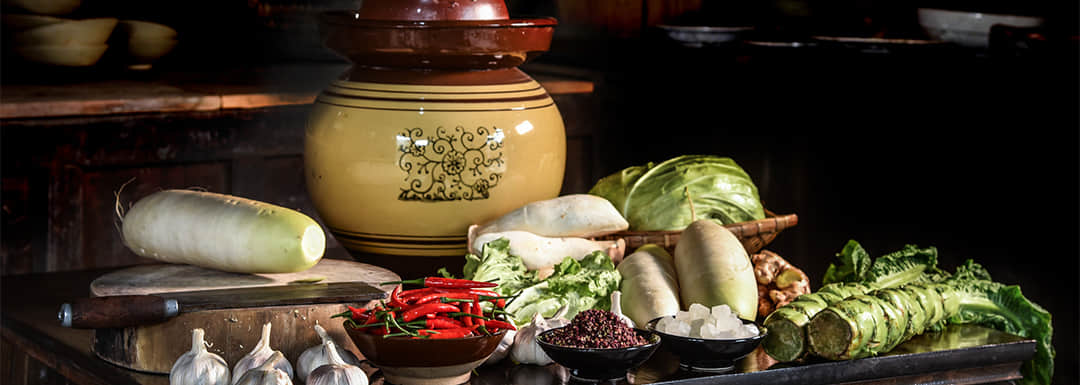

While many western diets are usually either bread- and wheat-based, or potato-based, Asian diets tend to be rice-based and noodle-based. The rice or noodles help diners to feel full, and take up the flavors of the sauces accompanying the rest of the food.
In a communal restaurant meal where the main dishes are placed on the rotating “Lazy Susan” in the middle of the table, bowls of rice are served to individual diners, and refilled as required. Food from the center plates can be added to the rice bowl, along with sauce and flavor. And at the end of the meal, the guest should always leave some rice in their bowl, to indicate that the meal has satisfied them.
However, you just can’t have Chinese food without vegetables! Maybe in western countries you could choose some ‘Chinese’ takeout which was all fried battered meat/fish and rice, but you wouldn’t have a meal like that in China, because without the vegetables there would be very little to eat. Including a variety of vegetables in a meal is all part of the balance that is so important to Chinese cuisine.
Here are just a few of the many delicious and nutritious vegetables that may be included with a meal in China. Many of them are similar to vegetables commonly seen in western cuisine, with slight differences.
1. Chinese Broccoli (gai lan)
This vegetable is dark green with large flat leaves, thick stalks and tiny white flower buds, but is more leafy, and with a stronger flavor than the well-known western broccoli. In the kitchen it is usually stir-fried with garlic or poached in water and served with oyster sauce.
2. Bok Choy
China’s most popular and well-known vegetable – now available all around the world – Bok Choy (or Pak Choy) has a light, sweet flavor and crisp texture. It can be used in any dish, from stir-fries to braised food to soups, adding color and nutrition. As well as the immature form, known as Baby Bok Choy, it comes in two varieties, one with dark green leaves and white stems, and one with yellow stems known as Shanghai Bok Choy.
3. Choy Sum
Choy Sum (meaning ‘vegetable heart’), also called Yau Choy (meaning ‘oil vegetable’) looks a bit like Chinese broccoli with its large flat leaves and tiny flower buds, but it has slender stalks. Its flavor is milder, and it goes well with garlic in a stir-fry.
4. Bamboo Shoots

The young shoots of the bamboo plant are delicious and nutritious, and a popular inclusion in Chinese cuisine.
5. Lotus root
This most interesting lacy-looking vegetable is often added raw to sir-fries, soups, and salads, where it brings a crisp texture and sweet flavor. The lotus is an aquatic plant that grows in marshes and shallow ponds, and the tuberous root dug from the mud is looks like a large buff-colored link of sausages. Once it is sliced, the channels running through the root give a delicate, lacy appearance.
6. Bitter Melon
This unusual-looking vegetable resembles an ugly cucumber with dark-green pockmarked skin, and has a bitter taste. It is considered to have medicinal benefits, such as curing diabetes. The bitterness can be reduced by applying salt to draw out the moisture. It is popular in stir-fries where it is frequently paired with other strong flavors.
7. Chinese Celery
Chinese celery originated from a native Asian wild celery and has a stronger taste, thinner stalks, and darker green color than celery used in the west. Because of the more powerful taste, it is excellent in soups and stir-fries, but too strong for use in salads.
8. Chinese Longbeans

Growing to an impressive meter (yard) long, these beans are traditionally used to make a popular dish at Chinese buffets. They are also known as snake beans and Chinese pea (because they are the same family as black-eyed peas or cowpeas). In Cantonese cuisine they are frequently paired with salted black beans or fermented bean curd.
9. Chinese Eggplant
Long and thin, and purple sometimes streaked with white, the Chinese eggplant or aubergine, is a popular addition to many dishes, including Szechuan eggplant braised in garlic sauce. The vegetable adds bulk to the dish, and readily absorbs other delicious flavors.
10. Silk Squash
Sometimes called Chinese okra, or angled luffa, the silk squash is a bit like a fuzzy melon. When it is older it can have a bitter taste, but the immature squash can be stuffed with pork and steamed, or stir-fried or deep-fried.

11. Chinese White Radish
Looking like a very large white carrot, the Chinese white radish has a much stronger flavor than its small round relatives, and as such is a useful addition in both stir-fried and slow cooked dishes. The vegetable is low in calories, but a good source of vitamin C.
12. Chinese cabbage
Chinese cabbage, also sometimes call sui choy, is a large cabbage with pale green leaves. It has a mild, sweet flavor that pairs nicely with more strong flavored foods, and can be steamed, stir-fried, or sautéed, as long as it is not overcooked.
13. Mung bean sprouts
Nowadays popular overseas as a salad vegetable, these silvery sprouts known as nga choy have been used in China for about 3,000 years. With their crisp texture and sweet flavor they are used in stir fries as well as salads. They are nutritionally low in calories, fat and carbohydrates, high in vitamin C, and a good source of protein. Stir-frying them briefly reduces the chance of food-borne illness while preserving the crispness.
14. Tofu

This staple, which evokes a variety of reactions among western foodies, is ever popular and available in China in an assortment of styles and flavors to please every palate. As you walk down the street, your nostrils may be assaulted by the unmistakable stench of “stinky tofu” from a street stall, or someone may offer you what simply sounds like “dowf”. The facts is, correctly prepared tofu can be both nutritious and delicious, as the Chinese know well. It is high in protein, as well as iron and magnesium, while being low in calories. And it can be incorporated into a satisfying savory meal, or a light dessert serving.
According to one Chinese legend, tofu was invented when a cook decided to experiment with flavoring a batch of cooked soybeans with the compound nagari, and ended up making bean curd (tofu). There are other stories, including the one about the man trying to create a nutritious food for his elderly, toothless parents. Blending soybeans, he made a soup, which they didn’t much like because of the crumbs of soybeans, so then he sieved it through muslin cloth, but they found it tasteless. He added salt and left it to cool, and returned later to find that it had set and become jelly-like.
The process for making tofu is similar to that for making cheese. A coagulant is used to curdle soy milk, and then the curds are pressed into a solid block.
Tofu is available as firm tofu, which is ideal for both stir-frying and deep-frying, and soft or silken tofu which is usually used in soups or salads. There is also extra firm tofu, fermented tofu, stinky tofu, dried tofu, frozen tofu, tofu puff and tofu skin – to name a few.

OR
Are you eager to begin your Chinese cultural journey?
Drop us a line and we will promptly connect you with our leading China expert!
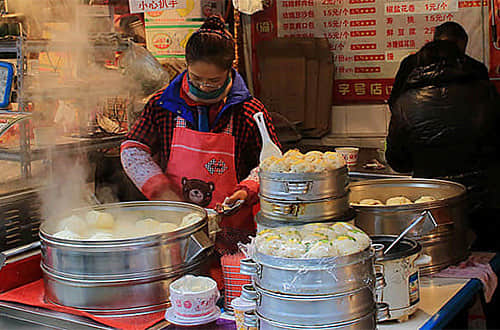 Foods and Snacks
Foods and Snacks 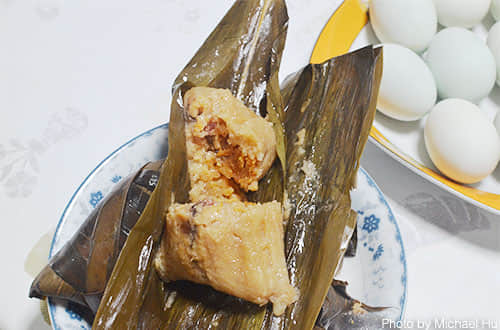 What is Zongzi?
What is Zongzi? 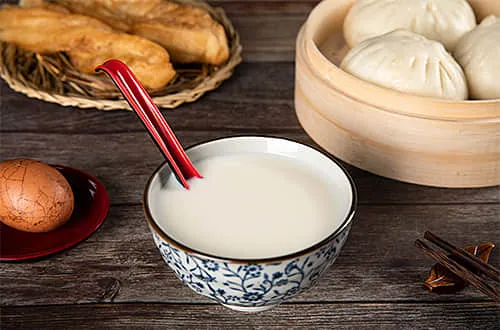 What the Chinese Eat for Breakfast
What the Chinese Eat for Breakfast 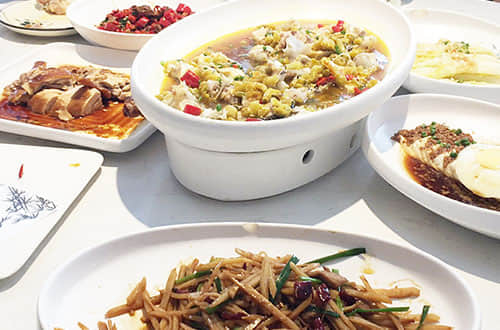 What the Chinese Eat for Lunch
What the Chinese Eat for Lunch